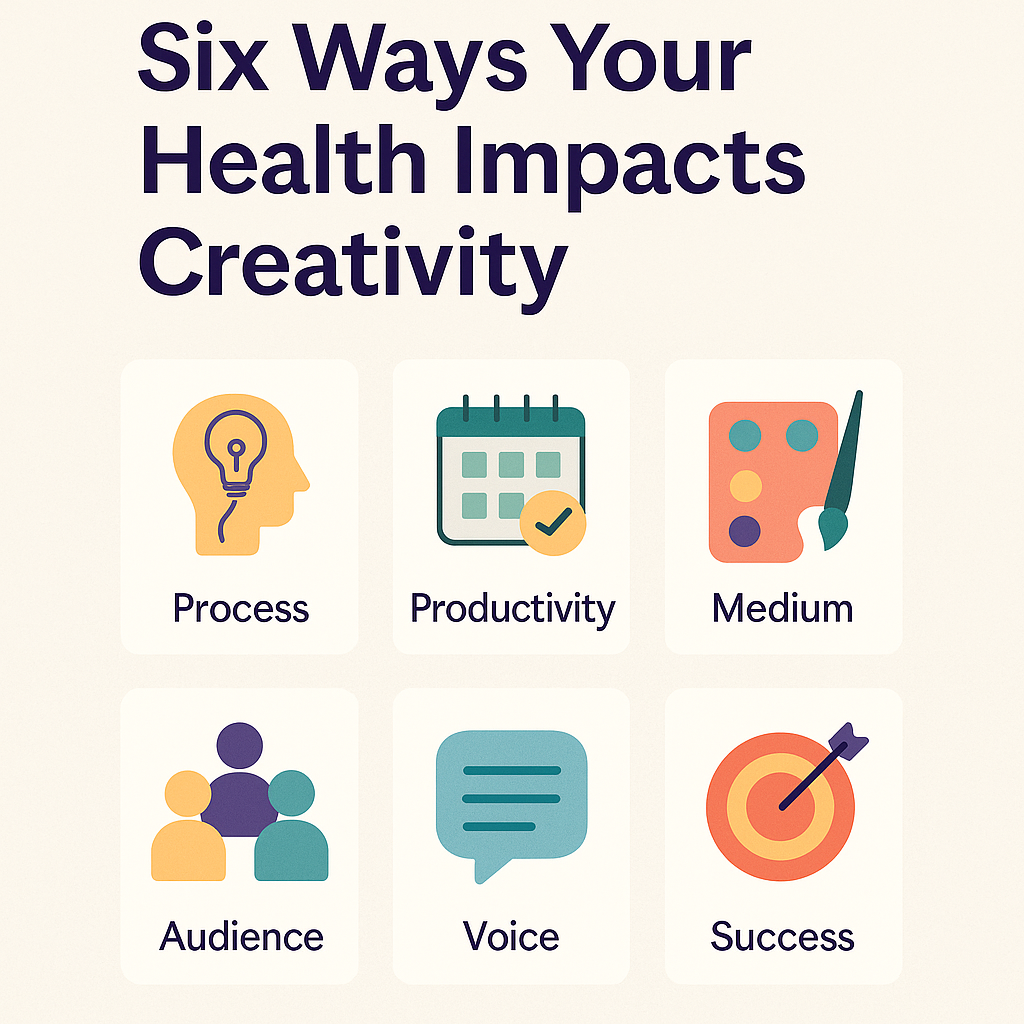
When creatives come to me feeling blocked, inconsistent, or confused about who they are in their work, what we uncover is often far deeper than a temporary disruption in motivation. What we are seeing is a change in creative health—an interwoven network of patterns, needs, and beliefs that shape how a person relates to their art. This six-part framework offers a reflective structure to help name and explore these changes. Each domain is a point of inquiry, not a diagnostic category. The purpose is not to fix what is not working, but to understand what the work is responding to.
1. Creative Process
This refers to the how of your work. How do you approach making? What rhythms, rituals, or environments support your ability to enter a creative state? For many people, process becomes a source of anxiety when old methods stop working. Maybe you used to thrive on early mornings or long uninterrupted stretches, but now your health, schedule, or cognitive patterns require shorter, less structured sessions. This does not mean you are less committed. It means your process is asking to be reconfigured in a way that honors your current reality.
2. Productivity Patterns
Here we explore the when and how much. Creative identities are often tied to output, but this framing can collapse under the weight of chronic illness, burnout, or shifting priorities. Are you expecting yourself to work at a pace that no longer matches your capacity? Are you equating slow periods with failure? Noticing the mismatch between expectation and ability is essential. Productivity is not a measure of worth. It is a reflection of energy, accessibility, and alignment.
3. Medium or Modality
Sometimes the work itself wants to change form. This might mean shifting from writing to movement, from performance to collage, or from digital to tactile materials. These changes are not arbitrary. They reflect subtle psychological needs—whether for containment, expression, safety, or control. In my own experience, I have turned to fiber arts when language felt too sharp. Stitching became the way I reentered creative space when words could not yet hold what I was feeling. When your primary medium no longer feels accessible, it may be time to ask what your nervous system is reaching toward instead.
4. Creative Content
This is the what of your work. What themes or truths are you exploring, and have those themes shifted? Many creatives experience discomfort when they no longer feel drawn to the same subjects. They may feel bored, emotionally distant, or even resistant to what they once felt called to express. This is natural. We change. Our stories deepen or move. Allowing your content to evolve can feel risky, especially if your public identity has been tied to a particular genre or topic. But that evolution is often where your most honest work begins.
5. Self-Perception
This domain focuses on how you see yourself in relation to your creativity. Do you still identify as an artist, a writer, a maker, if you are producing less or working differently? Many clients carry shame around changing output or style because they have internalized narrow definitions of what it means to be a real creative. Revisiting and updating those definitions is often the most healing work we do. You are not required to create in the same way forever in order to be legitimate. You are allowed to shift and still belong to your creative identity.
6. Sustainability and Long-Term Support
Finally, we look at whether your creative life is built in a way that supports longevity. Can you keep doing what you are doing without crashing? Are your systems, boundaries, and goals aligned with your physical and emotional health? This is often the point where the body speaks loudest. A sustainable practice is one that leaves room for fluctuation, for illness, for grief, and for joy. It does not ask you to be consistent above all else. It asks you to be honest, supported, and resourced.
Leave a Reply